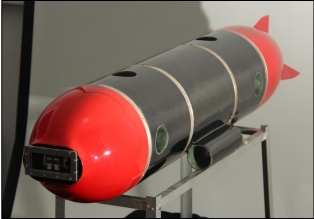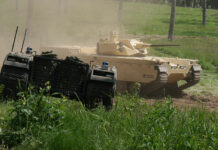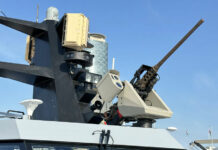
Today, there are many remotely operated submarines that handle important tasks, such as checking underwater pipelines, mapping underwater minefields, searching for locations to place communication cables, and finding sunken vessels. These marine vessels, however, are limited by effective communication cables and require frequent human-operator contact. Israel’s Ben-Gurion University is developing a more accurate and effective autonomous, intelligent, underwater vessel that will revolutionize these and other tasks by thinking for itself. I-HLS Reports.
A team of eighteen students from Ben-Gurion University of the Negev has designed and developed an intelligent, autonomous submarine called the Hydro Camel, the first of its kind in Israel. Several members of the BGU Hydro Camel submarine team are competing in the 16th Annual RoboSub Competition being held this week in San Diego. The competition is sponsored by the U.S. Office of Naval Research and the Association of Unmanned Vehicles International (AUVSI) Foundation.
This year’s competition features thirty-six national and international collegiate and high school teams. The goal is to advance the Autonomous Underwater Vehicle (AUVs) development by challenging a new generation of engineers to perform realistic missions in an underwater environment.

“There is a need for an autonomous submarine that is equipped with an intelligent navigation system whose functions include mission planning, obstacle avoidance and decision-making that are as good as a human operator,” says Prof. Hugo Guterman, head of the BGU Laboratory of Autonomous Robotics. “After the competition, we plan to further develop the submarine to its optimum capabilities, which we hope will place the State of Israel at the forefront in developing tools for marine autonomy,” says team Hydro Camel member Guy Kagan, who will be competing in San Diego.

The cylindrical, carbon fiber Hydro Camel sub measures some five feet (1.5 m), weighs 84 lbs. (38 kg) and is divided into five main cells. The four side cells, filled with water, contain six thrusters, a robotic arm, torpedoes, batteries, and cameras. The central cell houses the electrical system, main computer and all electrical components.
Today, there are many remotely operated submarines that handle important tasks, such as checking underwater pipelines, mapping underwater minefields, searching for locations to place communication cables, and searching for sunken vessels. These marine vessels, however, are limited by effective communication cables and require frequent human-operator contact. “BGU is developing a more accurate and effective autonomous, independently thinking underwater vessel that would revolutionize these and other tasks,” explains Boris Braginsky, another BGU team member competing in San Diego.
Source: I-HLS

















